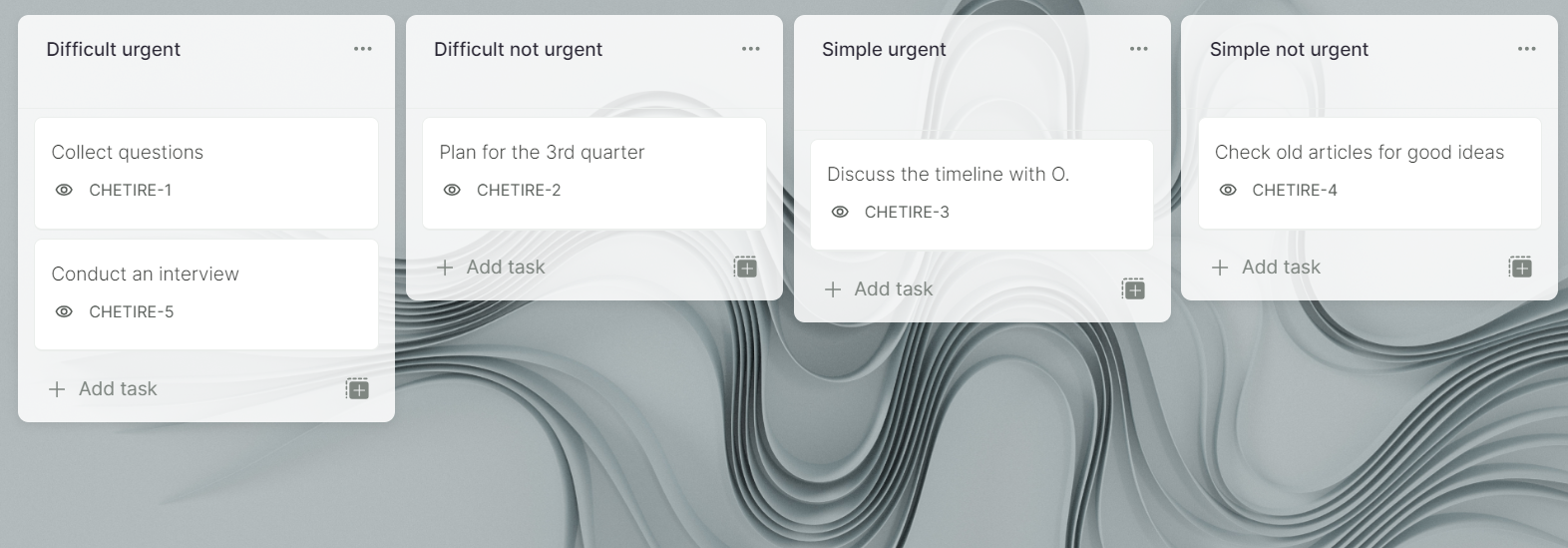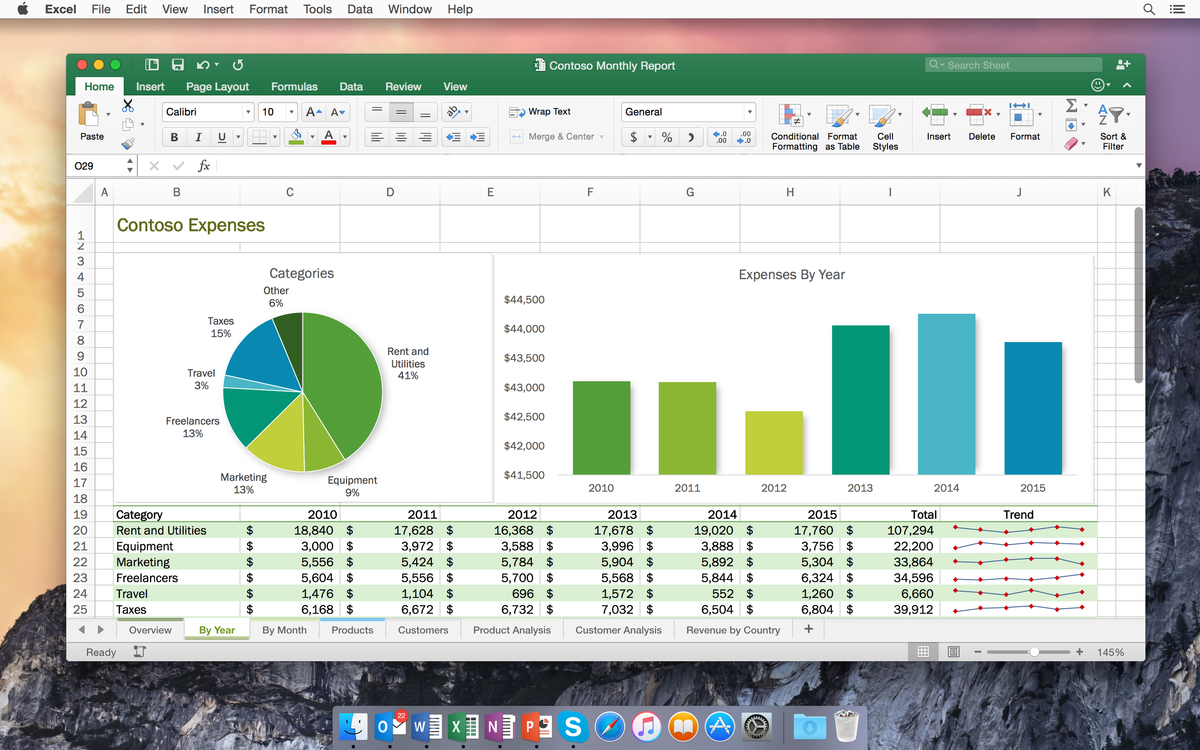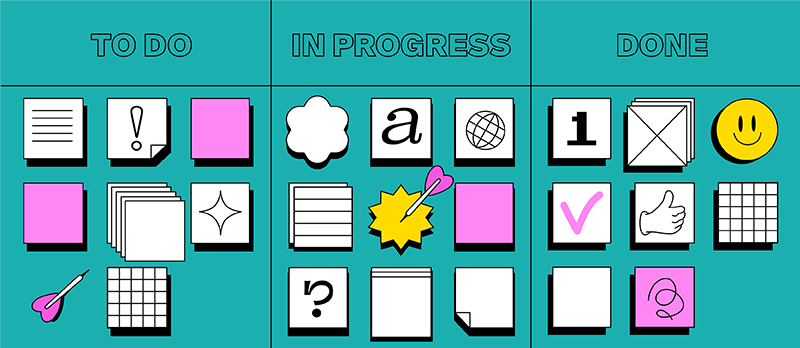Time management tips

Time management is a system of principles, methods and tools that help you optimise your time for greater productivity. While it sounds complicated, but in this article we will look at the basic principles and methods that will help turn 24 hours in a day into 48 and explain what time management is in simple words.
Time management helps us set priorities and understand what to focus on first, how much time we spend on things and how we can optimise it.
Time management is needed to avoid laziness and procrastination, to focus on what’s important. You can read more about procrastination in the article.
Basic principles
The principles of time management include planning, setting goals, prioritising, organising time and controlling its use.
In simple words – time management is not about limiting and controlling time, but about knowing how to use it.
Time management allows you to bring a structured and organised approach to life and work and achieve great results.
Time management. How to get everything done?
There is no universal method of time management that will help everyone, but here are the basic principles:
- Plan ahead: start by making a to-do plan and prioritise them. Set goals and get a clear idea of what needs to be finished and when. Make a general to-do list and pick and choose from it. Start with the top ten that you can remember. Check calendars and emails – something may have been left there.
- Set realistic goals, be reasonable and don’t overwhelm yourself. Don’t try to close a five-year plan in three days – focus on the essentials, leave planned time for rest and breaks. Mark them on your calendar if you share it with colleagues – there will be fewer calls during the break and no one will try to schedule a meeting at lunchtime.
- Plan ahead: divide your day into blocks of time for different activities. Set times for work, leisure and business correspondence, use your time more efficiently and don’t get lost in your plans.
- Learn to delegate so you can focus on what really matters. Work out who in the team is responsible for what and ask for help. If there’s a designer in the department, don’t draw elements of the site – it will take longer and turn out worse than a pro.
- Use task trackers: task trackers such as MOGU can help you collect tasks in one place and quickly navigate through them to estimate lead times and prioritise them.
- Prioritise: take into account the urgency of things, put them in order of priority. Doing the main thing first will help you focus on key things and not put them off. In the task tracker you can mark them with special tags or drag them into the Urgent column.
- Analyse your classes. Try to understand where your time goes – games on your phone, tiktok and YouTube take up more hours than it seems.
- Avoid distractions – switch off notifications on your phone and computer, create a special place to work without extraneous stimuli. Install counters on your phone and computer for minutes spent in programmes and applications.
- Create a comfortable workplace. If you work at home, organise your office with partitions or shelving, divide the working area and the rest area. It should be comfortable, with natural light and a comfortable chair that won’t make your back ache. If you can’t create a separate workspace, switch off your computer in the evenings and take your laptop out of sight – this way you can maintain a work-life balance.
How to write a time management book
Time management books offer different strategies for time management, tips and instructions on how to implement them into your daily life, but if you’re reading this article, it’s unlikely you have time to read them all. The essentials are collected here:
- The Pomodoro technique involves dividing your day into periods of productivity and rest. One period is 25 minutes (called “tomatoes”) in which to concentrate on work, followed by a short break of 5 minutes. After 4 cycles, a break of 15-30 minutes follows.
- Eisenhower Matrix: a time management method based on categorising tasks by importance and urgency. They are divided into 4 categories: important urgent, important non-urgent, unimportant urgent, unimportant non-urgent. The technique helps you prioritise and focus on what’s important. Divide a sheet of paper into 4 parts and write things down in them, or use a task tracker and put them in 4 columns.

- The 2 Minute Method: If you can complete a task in 2 minutes or less, do it immediately. Spending 2 minutes to do it instantly will save you the time you would have spent waiting, checking, or procrastinating. Choose small and simple chores to start with, then move on to the complex ones. This way you will start the day with a small victory! This method goes great with the tomato technique.
- Time blocking – the method is not about blocking, it’s about blocks. Divide your day into blocks and set aside specific times for certain things. Set a block for reports, a block for answering emails, a block for meetings and so on. This way you can concentrate on one task at a time and not get distracted. Blocks can be repeated, you don’t have to spend 4 hours in a row doing meetings. Two hours for meetings in the morning, two in the afternoon, with blocks in between for work, brainstorming and relaxation.
These are just examples of popular time management techniques. Remember that each person is unique, so the most effective approach is individualised. Experiment with different options and their combinations until you find the right one.
How to use task trackers to organise working time: team efficiency
One of the objectives of time management is to achieve team efficiency.
Team efficiency is about maximising the use of team resources such as time and skills. In order to achieve it, three points are important:
- Clear goals and priorities are set. A well-organised team knows which work, projects or tasks need more time and resources. This allows them to allocate their time and focus on important and urgent tasks.
- Time is planned and allocated.Each team member can plan their work in detail, taking into account priorities and deadlines. This helps avoid delays and deadlines and improves overall team efficiency.
- Communication and teamwork are established. Team members need to share information and discuss issues in a timely manner to avoid miscommunication and reduce time to correct mistakes. Teamwork enables optimal utilisation of team resources.
MOGU’s task tracker is an integral part of time management. It tracks and organises tasks, controls their completion and sets priorities.
With MOGU, you can easily create a to-do list, set deadlines and goals. This approach avoids tardiness and missed deadlines, increases productivity and reduces stress. Keep your tasks at your fingertips and don’t worry about forgetting something.
If you want to try time management as a system, sign up for MOGU and easily keep track of your tasks.


